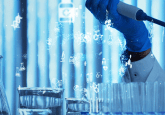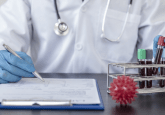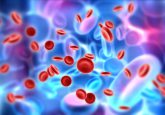Interview with James Rudge (Neoteryx) and Neil Spooner (Spooner Bioanalytical Solutions)
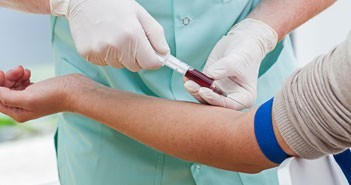
In this interview we sat down with Neil Spooner of Spooner bioanalytical solutions and James Rudge, global microsampling specialist for Neoteryx, to discuss their experience in microsampling. They discussed important recent developments in the field and also shared their thoughts on what the future looked like for microsampling.
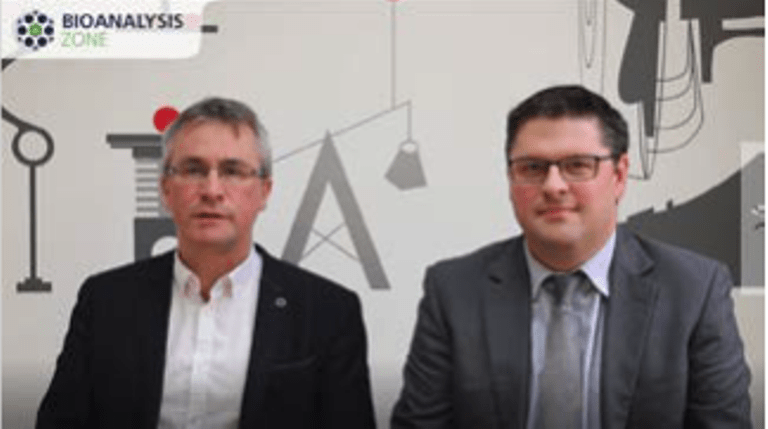 What is your greatest career achievement?
What is your greatest career achievement?
NS: My greatest achievement so far has been helping – hopefully in some small way – to bring microsampling forward into the public agenda, and start to change how people think about doing animal studies, how we collect samples in clinical studies, and how we actually process those samples.
Could you provide a summary of your career to date?
JR: I did my degree and PhD at the University of Wales, Swansea. Having completed my PhD, which was in organic chemistry synthesizing chemiluminescent probes for immunoassays. I then went on to work at Phenomenex in 2000, where I had a number of roles. In 2014 I moved to Neoteryx to be their global microsampling specialist.
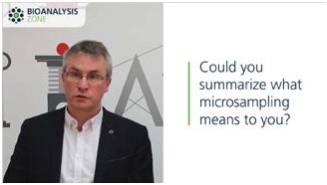 Could you summarize what microsampling means to you?
Could you summarize what microsampling means to you?
NS: It’s a variety of techniques for taking small biological samples, typically blood or plasma, or other biofluids, to generate high quality quantitative data that is reflective of the subject. Taking smaller samples is a more ethical approach for both the animal and for clinical subjects and enables us to get samples we just wouldn’t be able to get in other circumstances
What began your interest in microsampling?
NS: My interest in microsampling started 9 or 10 years ago when we were trying to figure out how to collect samples in paediatric studies. Obviously when dealing with very small children, conventional methods of collecting blood samples were just not adequate, so we did some research and that’s where we started to get involved with dried blood spot sampling.
Do you see a shift in interest in implementing microsampling?
NS: I think there is a growing interest of users from different companies and other areas wanting to implement microsampling. They recognise the benefits of the technology – it’s obviously a big change for them, and that is making it go slowly but you do see it growing. There are an increasing number of publications in Bioanalysis Zone and Bioanalysis journal and an increasing amount of interest in those publications, and lot of talks at major conferences.
How important is education to increase application of microsampling?
NS: I believe that with any new technique, change is difficult and something as fundamental as microsampling is a big change for an organisation. Running workshops where you can not only educate people on what the state of the art is and where it might be going, but you can also listen to people’s concerns, get feedback, and get their ideas on how to move the agenda forward – I think that’s the more constructive way of moving to a new reality.
What is your greatest career achievement?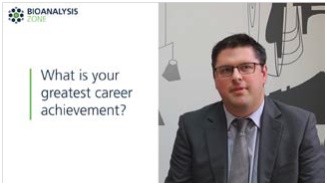
JR: My greatest career achievement so far is conceiving the idea of volumetric absorbity of
microsampling and then watching what was essentially a concept idea be transformed into a fullyfledged product. I’ve been very lucky to work with some really talented people, both within what was Phenomenex and now Neoteryx and I have to say a big ‘thank you’ to Neil and Phil Denniff, who provided a lot of encouragement and enthusiasm throughout the project.
Could you tell us about the Mitra VAMS technology?
JR: VAMS stands for volumetric absorption of microsampling, and is a technique for obtaining a small amount of a biological fluid. It’s based on the best bits of dried blood spot and low volume pipetting. The idea behind it is that you’ve got a small, absorptive hydrophilic polymer on the end of what looks like a pipette tip; when you apply the tip at a positive angle at a blood pool, whether that’s a finger prick or taken from an animal’s tail, and then very rapidly the blood (in this case) is absorbed onto the tip, allowed to dry. It’s quantitative so it usually takes up 10 or 20 microlitres which solves one of the fundamental issues of DBS. Then in very much the same way as dried blood spotting (DBS), the blood on the tips are dried and they can be sent via regular mail to a laboratory, so it allows for remote sampling and analysis at a laboratory many thousands of miles away. Within the laboratory this is where the pipette tip comes into play – having the pipette tip means you have the option to automate a product onto standard lab liquid handling systems.
What are the uses of the technology?
JR: the uses of the technology are quite wide, from drug clinical trials in which the blood of individuals needs monitoring through to research in low-resourced regions, through to analyzing even larger molecules such as proteins and peptides – even RNA and DNA!
What are the limitations of the technology?
JR: The limitations of the technology are based upon what it is the lab really wants to measure and how it’s going to measure it. If one takes, for example, an immunosuppressive like (Tacrolimus), it’s a perfect candidate for volumetric absorbative microsampling because that molecule will partition mainly into the hematocrit, and in actual fact, in the lab it is analyzed from blood and not a portion of blood such as plasma or serum. On the flip side, if one wanted to measure potassium then it wouldn’t be a good candidate and the reason for that is because plasma-potassium is tested quite a bit in terms of measuring electrolytes. The body will selectively pump potassium into cells so when you collect blood and you let that blood dry onto a surface like a DBS card then the drying action causes a release of cellular potassium into the plasma massively biasing the results and making them interpretable. If you’ve got compounds which only exist in the plasma fraction such as vitamin D then you can measure vitamin D levels using VAMs but then one has to be aware that the plasma concentration. This is because for the same volume is always going to be higher for the blood concentration because the blood cells take up some of that volume so one has to think about different reference ranges or adjusting the data to match the plasma data. So it really depends on what it is you want to do.
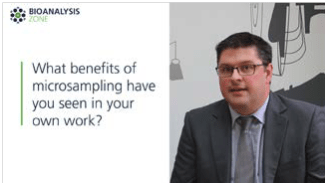 What benefits of microsampling have you seen in your own work?
What benefits of microsampling have you seen in your own work?
NS: In the pre-clinical area, we’ve seen some big reductions in the number of animals used, by being able to take the toxicokinetic samples from main study animals. Previously they had been satellite animals because the volume taken would affect the outcome of the toxicology study. By taking only smaller volumes, we now know in many cases that will not affect the outcome of the study, so we
can take them from main study animals, so that uses fewer animals and also gives better quality data because we can now correlate the concentration data directly to that of the toxicology outcomes in those same animals. Obviously there’s also the benefit of being able to sample from children and very small children – samples which we just wouldn’t have been able to take in the past. We’re also able to take samples in remote locations, particularly with the dried samples that we just wouldn’t have been able to collect because a lot of these places don’t have access to centrifuges, freezers or dry ice.
JR: In the clinical environment, it’s all about the patient experience, so some of the drugs that patients are expected to take have a very narrow therapeutic index and so monitoring is important. Immunosuppresants are the perfect example, when dosed too high you get necrosis of an organ;a too low a dosing and then you risk organ rejection.
One of the side effects of these drugs is that some of the people on these drug regimens can become immunocompromised; going to clinic is disruptive for the patient, as hospital could potentially be exposed to pathogens. So, to be able to offer a microsampling solution where they can test at home, is really good and is less disruptive to their lives, it’s safer, and it means you can potentially take more time points – one could argue for and against why you would want to do that, but it gives the opportunity to do this rather than go back into the clinic for multiple blood draws. Another great area is drug compliance and there’s been some really interesting statistics out, which show that drug non-compliance can be anywhere between 30 and 80%. One of the ways in which we can try and improve drug compliance is to monitor at home by people testing themselves, and that provides some huge benefits.
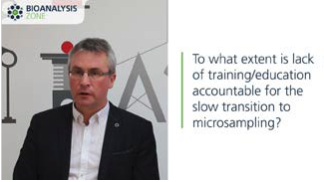 To what extent is lack of training/education accountable for the slow transition to microsampling?
To what extent is lack of training/education accountable for the slow transition to microsampling?
NS: I think that’s part of the picture, but I think more important is peoples’ concern over the quality of data that they’re generating and the acceptance of that data. I think that’s the bigger problem and training is then part of that to help people understand how they might be able to perform experiments to show them that they are generating good quality data, and for people to publish and talk about how they have shared their data with regulators and how it is accepted. I guess that does come in to training and education, but I think the main problem is people just being concerned about the quality of the data and it being accepted by others.
JR: The key thing for me is that there has to be a body of good peer-reviewed data out there – both in analytical chemistry, but also in clinical chemistry, so that late adopters of technology feel confident that the technology is going to work for them, and that’s what’s really important.
How can we overcome this?
NS: We can overcome this reluctance by continuing to listen to peoples’ concerns and acting on those concerns, and as James said, building up a good compendium of data in peerreviewed journals where people have shared their experiences, shared their negative data as well as their positive data because things don’t always go right with new technology and people need to share that so that those who are adopting it don’t have false expectations of what the technology is going to do for them. Good peer-review, written articles, workshops – anything we can do to get the word out, people thinking about it, asking questions and performing high-quality experiments for themselves to understand the benefits and the limitations.
JR: It’s all about education, all about learning, training, reading and being engaged with the technology. Once one feels more comfortable about using the technology, you know what the potential drawbacks and challenges are, you can build upon that and make good, robust methods that can be very relevant for what it is you’re trying to do.
NS: One thing that’s been very successful is companies coming together in a non-competitive way to design experiments, share data and publish that data. We’ve seen the IQ Consortium and the European Bioanalysis Forum doing that and I’m sure there’ll be others in the future and I think that’s a very powerful way – more powerful than just an individual or an individual company saying they believe in this and have good data. If there’s 10 or 20 companies all coming forward and saying the same thing, then it tends to convince the slow adopters and the people who will, in the end, accept the data and have to make decisions based upon it.
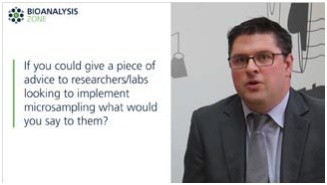 What advice would you give to researchers/labs looking to implement microsampling?
What advice would you give to researchers/labs looking to implement microsampling?
NS: I’d say ‘try and come at it with an open mind’. It is new; it is different; it is a change and it’s not perfect. While it’s not going to work for everything, it’s a useful tool to have in the toolbox to use in places where maybe you’ve got project teams who want to collect samples and they’ve never been able to before and maybe now you can help them. Don’t use it for everything, but use it where it’s appropriate and where it’s going to give you good quality data.
JR: For me it would be to learn as much as you can – go to conferences, read journals. It’s a new technology – yes, it’s been around for a while but back in the 1960s those blood spots were essentially analysed by semi-quantitative methods. There are a lot more challenges now as we’re really trying to tighten up the quantitation. So don’t give up!
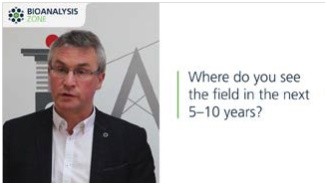 Where do you see the field in the next 5-10 years?
Where do you see the field in the next 5-10 years?
NS: Hopefully in 5-10 years we’ll see microsampling being a standard technique in areas where it provides a real benefit over standard sampling – hopefully in discovery and development toxicology studies and PK studies it will be standard practice, and hopefully in paediatric clinical studies and areas where we need to collect extra samples in remote areas or at-home sampling it will be standard practice.
JR: In the next 5-10 years, because of the massive increase in computing power and instrument sensitivity and specificity, I see a whole raft of biomarkers coming out for various clinical reasons, so there’ll be a whole pile of new tests compatibile with microsampling that’s going to be clinically relevant and clinically available. Perhaps in the next 20 years I hope that with just one drop of blood we’ll be able to analyze the genome, phenome and metabolome, and then detect and personalize the treatment of a disease based on one blood spot.
NS: I agree with that James, and building on that I think we’re going to see more patientcentric sampling where the patients are going to start taking a little bit more control of taking samples for themselves and finding out data about themselves that they will then take to the doctor to be interpreted for treatment and we can start diagnosing disease earlier, which gives us a better chance of curing disease.
JR: and also the fact that now – take cancer for example – cancer isn’t a disease, it’s a collection of many different types of diseases, and scientists and medical scientists within the field are actually realizing there are so many different forms of a disease and the really exciting thing about the technology moving forwards is that we can identify the specific versions of disease and then medicine can be personalized for that.
NS: one last thing I’d like to see as well, is as we get more adoption of these techniques, is looking at a more simplified, integrated workflow. At the moment, the bioanalyst is possibly at the wrong end of this technology – they find it hard and don’t really see the benefits. Hopefully we’ll see the technologies move along and we’ll see some better integrated analytical approaches that will help give good quality data in a more simple way.
JR: as technology is miniaturizing at a rapid pace, then doctors’ surgeries will have generic analysers on the benchtop where a sample can be analysed there and then, or at least given an idea and then be sent off – so it’s a very exciting future.
This interview was featured in an interactive supplement on microsampling published on Bioanalysis Zone. Click here to read the complete supplement.



